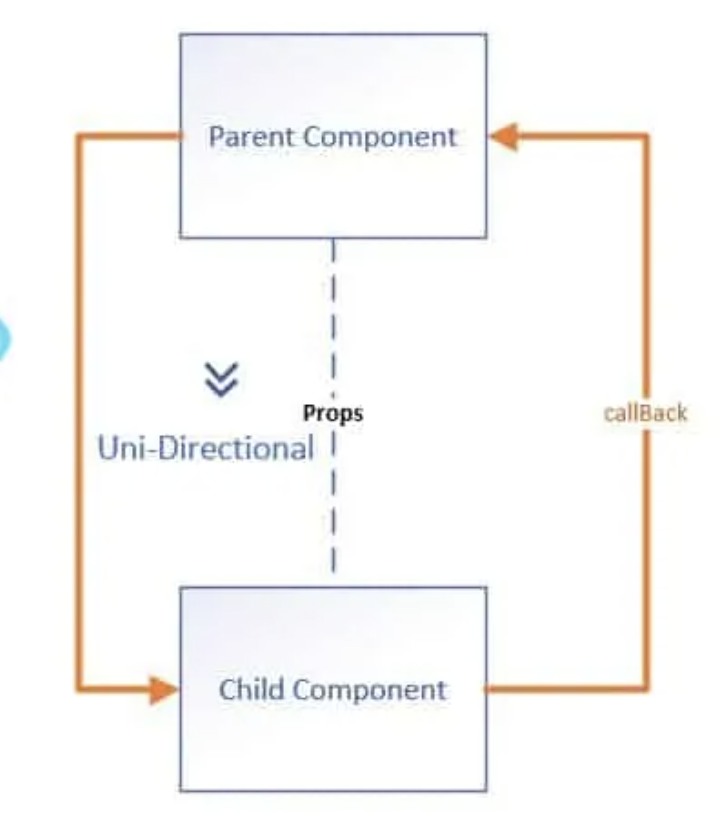在 React Native 中访问父子状态和函数
来源:dev.to
时间:2024-12-19 22:09:50 214浏览 收藏
有志者,事竟成!如果你在学习文章,那么本文《在 React Native 中访问父子状态和函数》,就很适合你!文章讲解的知识点主要包括,若是你对本文感兴趣,或者是想搞懂其中某个知识点,就请你继续往下看吧~

使用 react native 时,构建可重用和模块化组件是很常见的。有时,我们需要子组件访问或修改父组件中的状态和函数,反之亦然。父组件和子组件之间的这种通信可以通过几种不同的方式来实现。让我们深入研究各种技术,以便更轻松地在 react native 中的父组件和子组件之间共享状态和功能。
1. 将状态和函数从父级传递给子级
使用道具
props 是从父组件到子组件共享数据和函数的最直接的方法。当父组件需要控制子组件中的某些行为或数据时,这特别有用。
示例:将父级状态和函数传递给子级
import react, { usestate } from 'react';
import { view, button, text } from 'react-native';
const parentcomponent = () => {
const [count, setcount] = usestate(0);
// function to increment count
const incrementcount = () => setcount(count + 1);
return (
<view>
<text>count: {count}</text>
<childcomponent count={count} incrementcount={incrementcount} />
</view>
);
};
const childcomponent = ({ count, incrementcount }) => {
return (
<view>
<text>count from parent: {count}</text>
<button title="increment count" onpress={incrementcount} />
</view>
);
};
export default parentcomponent;
在此示例中:
- 父组件(parentcomponent)有计数状态和incrementcount函数。
- 这些通过 props 传递给子组件(childcomponent)。
- 子组件可以使用提供的函数显示和操作父组件的状态。
2. 从父级访问子级功能
要从父组件触发子组件中的功能,我们可以使用 refs 和 回调函数。
将 useref 与forwardref 结合使用
使用 useref 和 react.forwardref,父组件可以直接访问子函数,从而提供对子组件的更多控制。
示例:从父函数调用子函数
import react, { useref } from 'react';
import { view, button, text } from 'react-native';
const parentcomponent = () => {
const childref = useref(null);
// function to call child function from parent
const callchildfunction = () => {
if (childref.current) {
childref.current.showalert();
}
};
return (
<view>
<button title="call child function" onpress={callchildfunction} />
<childcomponent ref={childref} />
</view>
);
};
const childcomponent = react.forwardref((props, ref) => {
const showalert = () => {
alert('child function called!');
};
react.useimperativehandle(ref, () => ({
showalert
}));
return (
<view>
<text>this is the child component.</text>
</view>
);
});
export default parentcomponent;
在此示例中:
- 我们使用 react.forwardref 将 ref 从父级传递给子级。
- 子组件定义了一个使用 useimperativehandle 向父组件公开的 showalert 函数。
- 然后父级可以通过访问 childref 来调用 showalert。
3. 访问深度嵌套组件中的父状态和函数
在组件嵌套多层的情况下,通过每个组件向下传递 props 可能会变得很麻烦。对于这些场景,react context api 提供了一个解决方案,允许在整个组件树上共享状态和函数。
使用 react 上下文 api
示例:访问深度嵌套子级中的父级状态和函数
import react, { createcontext, usecontext, usestate } from 'react';
import { view, button, text } from 'react-native';
const countcontext = createcontext();
const parentcomponent = () => {
const [count, setcount] = usestate(0);
const incrementcount = () => setcount(count + 1);
return (
<countcontext.provider value={{ count, incrementcount }}>
<view>
<text>count: {count}</text>
<nestedchildcomponent />
</view>
</countcontext.provider>
);
};
const nestedchildcomponent = () => {
return (
<view>
<deepchildcomponent />
</view>
);
};
const deepchildcomponent = () => {
const { count, incrementcount } = usecontext(countcontext);
return (
<view>
<text>count from context: {count}</text>
<button title="increment count" onpress={incrementcount} />
</view>
);
};
export default parentcomponent;
在此示例中:
- 我们使用createcontext创建countcontext,它保存count和incrementcount函数。
- parentcomponent 将嵌套组件包装在 countcontext.provider 内,以提供对计数状态和incrementcount 函数的访问。
- deepchildcomponent可能嵌套了几层,可以使用usecontext轻松访问计数状态和incrementcount函数。
4. 在没有上下文的情况下从子级更新父级状态
如果子组件需要更新父组件的状态,并且您不想使用 context api,则可以将回调函数从父组件传递给子组件。
示例:使用子回调更新父状态
import React, { useState } from 'react';
import { View, Button, Text } from 'react-native';
const ParentComponent = () => {
const [message, setMessage] = useState('Hello from Parent');
// Callback to update parent state
const updateMessage = (newMessage) => setMessage(newMessage);
return (
<View>
<Text>Message: {message}</Text>
<ChildComponent updateMessage={updateMessage} />
</View>
);
};
const ChildComponent = ({ updateMessage }) => {
return (
<View>
<Button
title="Update Parent Message"
onPress={() => updateMessage('Hello from Child')}
/>
</View>
);
};
export default ParentComponent;
在此示例中:
- 父组件定义了一个函数updatemessage来修改其状态。
- 此函数作为 prop 传递给子组件。
- 子进程可以调用此函数来更新父进程的消息状态。
结论
react native 提供了各种方法来促进父组件和子组件之间的通信。根据您的需求:
- 使用props在直接父级和子级之间进行简单的数据和函数共享。
- 使用refs和forwardref来允许父组件调用子函数。
- context api 非常适合在深度嵌套的组件之间共享数据。
- 回调函数为子级提供了一种直接的方式来更新父状态,而不需要全局上下文。
这些方法如果使用得当,可以极大地增强你在 react native 中管理和组织复杂组件层次结构的能力。对每一个进行实验,了解哪一个最适合您的项目要求。快乐编码!
今天关于《在 React Native 中访问父子状态和函数》的内容就介绍到这里了,是不是学起来一目了然!想要了解更多关于的内容请关注golang学习网公众号!
-
502 收藏
-
501 收藏
-
501 收藏
-
501 收藏
-
501 收藏
-
492 收藏
-
233 收藏
-
492 收藏
-
180 收藏
-
113 收藏
-
164 收藏
-
154 收藏
-
232 收藏
-
236 收藏
-
188 收藏
-
162 收藏
-
192 收藏
-

- 前端进阶之JavaScript设计模式
- 设计模式是开发人员在软件开发过程中面临一般问题时的解决方案,代表了最佳的实践。本课程的主打内容包括JS常见设计模式以及具体应用场景,打造一站式知识长龙服务,适合有JS基础的同学学习。
- 立即学习 543次学习
-

- GO语言核心编程课程
- 本课程采用真实案例,全面具体可落地,从理论到实践,一步一步将GO核心编程技术、编程思想、底层实现融会贯通,使学习者贴近时代脉搏,做IT互联网时代的弄潮儿。
- 立即学习 516次学习
-

- 简单聊聊mysql8与网络通信
- 如有问题加微信:Le-studyg;在课程中,我们将首先介绍MySQL8的新特性,包括性能优化、安全增强、新数据类型等,帮助学生快速熟悉MySQL8的最新功能。接着,我们将深入解析MySQL的网络通信机制,包括协议、连接管理、数据传输等,让
- 立即学习 500次学习
-

- JavaScript正则表达式基础与实战
- 在任何一门编程语言中,正则表达式,都是一项重要的知识,它提供了高效的字符串匹配与捕获机制,可以极大的简化程序设计。
- 立即学习 487次学习
-

- 从零制作响应式网站—Grid布局
- 本系列教程将展示从零制作一个假想的网络科技公司官网,分为导航,轮播,关于我们,成功案例,服务流程,团队介绍,数据部分,公司动态,底部信息等内容区块。网站整体采用CSSGrid布局,支持响应式,有流畅过渡和展现动画。
- 立即学习 485次学习
